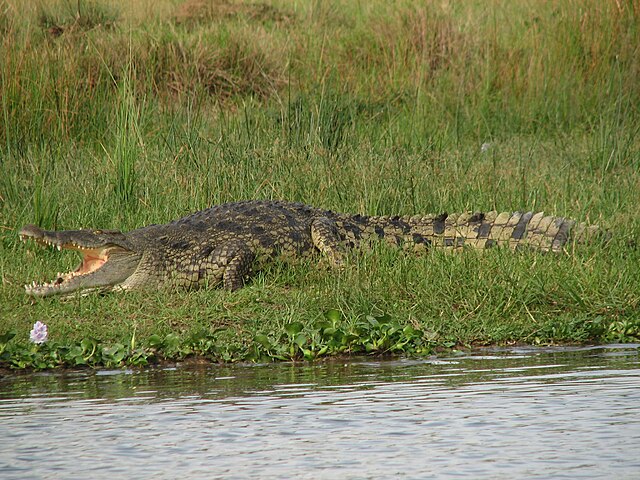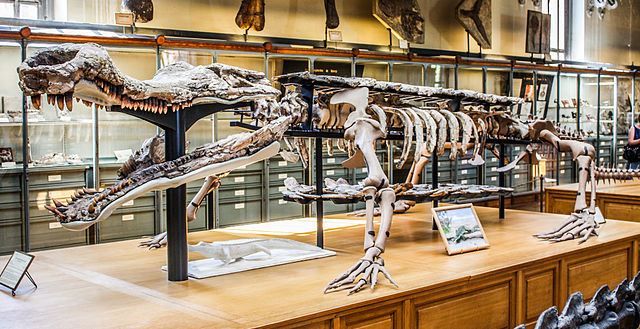Pholidosauridae is an extinct family of aquatic neosuchian mesoeucrocodylian crocodylomorphs. Fossils have been found in Europe, Africa, North America and South America. The pholidosaurids first appeared in the fossil record during the Bathonian stage of the Middle Jurassic. Jouve & Jalil (2020) described postcranial material of a pholidosaurid from the Paleocene (Danian) of Ouled Abdoun Basin (Morocco), representing the most recent record of the family. The authors also reinterpreted putative Maastrichtian dyrosaurid Sabinosuchus as a pholidosaurid, and argued that at least two independent pholidosaurid lineages reached the Maastrichtian, among which one survived the Cretaceous–Paleogene extinction event. Before the publication of this study it was thought that the family became extinct during the Late Turonian stage of the Late Cretaceous.
Pholidosauridae
Pholidosaurus purbeckensis fossil.
Neosuchia is a clade within Mesoeucrocodylia that includes all modern extant crocodilians and their closest fossil relatives. It is defined as the most inclusive clade containing all crocodylomorphs more closely related to Crocodylus niloticus than to Notosuchus terrestris. Members of Neosuchia generally share a crocodilian-like bodyform adapted to freshwater aquatic life, as opposed to the terrestrial habits of more basal crocodylomorph groups. The earliest neosuchian is suggested to be the Early Jurassic Calsoyasuchus, which lived during the Sinemurian and Pliensbachian stages in North America. It is often identified as a member of Goniopholididae, though this is disputed, and the taxon may lie outside Neosuchia, which places the earliest records of the group in the Middle Jurassic.
Image: Nilecroc 100
Image: Museum of Natural History Sarcosuchus




